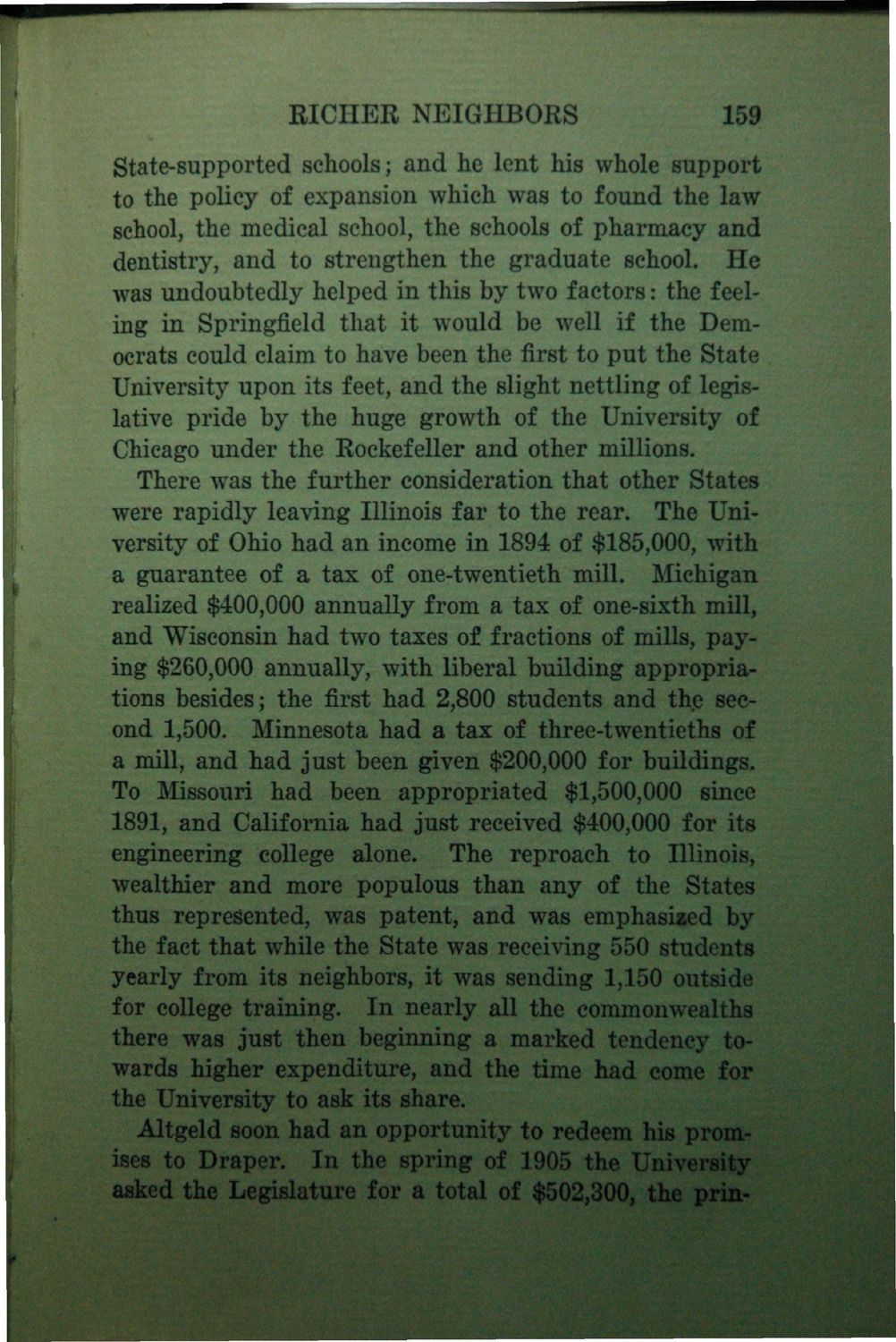| |
| |
Caption: Book - History of the University (Nevins)
This is a reduced-resolution page image for fast online browsing.

EXTRACTED TEXT FROM PAGE:
RICHER NEIGHBORS 159 State-supported schools; and he lent his whole support to the policy of expansion which was to found the law school, the medical school, the schools of pharmacy and dentistry, and to strengthen the graduate school. He was undoubtedly helped in this by two factors: the feeling in Springfield that it would be well if the Democrats could claim to have been the first to put the State University upon its feet, and the slight nettling of legislative pride by the huge growth of the University of Chicago under the Rockefeller and other millions. There was the further consideration that other States were rapidly leaving Illinois far to the rear. The University of Ohio had an income in 1894 of $185,000, with a guarantee of a tax of one-twentieth mill. Michigan realized $400,000 annually from a tax of one-sixth mill, and Wisconsin had two taxes of fractions of mills, paying $260,000 annually, with liberal building appropriations besides; the first had 2,800 students and the second 1,500. Minnesota had a tax of three-twentieths of a mill, and had just been given $200,000 for buildings. To Missouri had been appropriated $1,500,000 since 1891, and California had just received $400,000 for its engineering college alone. The reproach to Illinois, wealthier and more populous than any of the States thus represented, was patent, and was emphasised by the fact that while the State was receiving 550 students yearly from its neighbors, it was sending 1,150 outside for college training. In nearly all the commonwealths there was just then beginning a marked tendency towards higher expenditure, and the time had come for the University to ask its share. Altgeld soon had an opportunity to redeem his promises to Draper. In the spring of ffi^H asked the Legislature for a total of $502*300, the prin-
| |